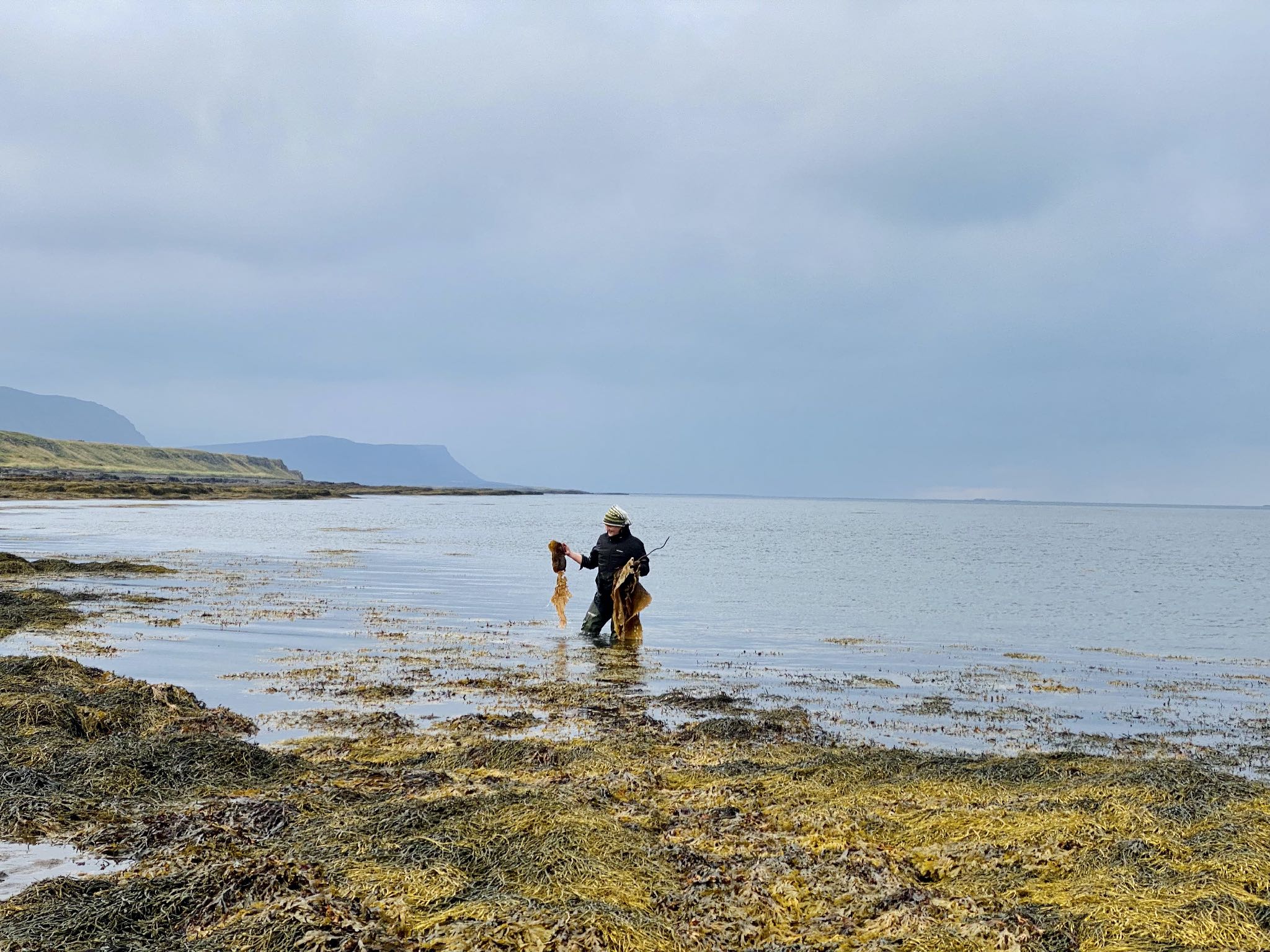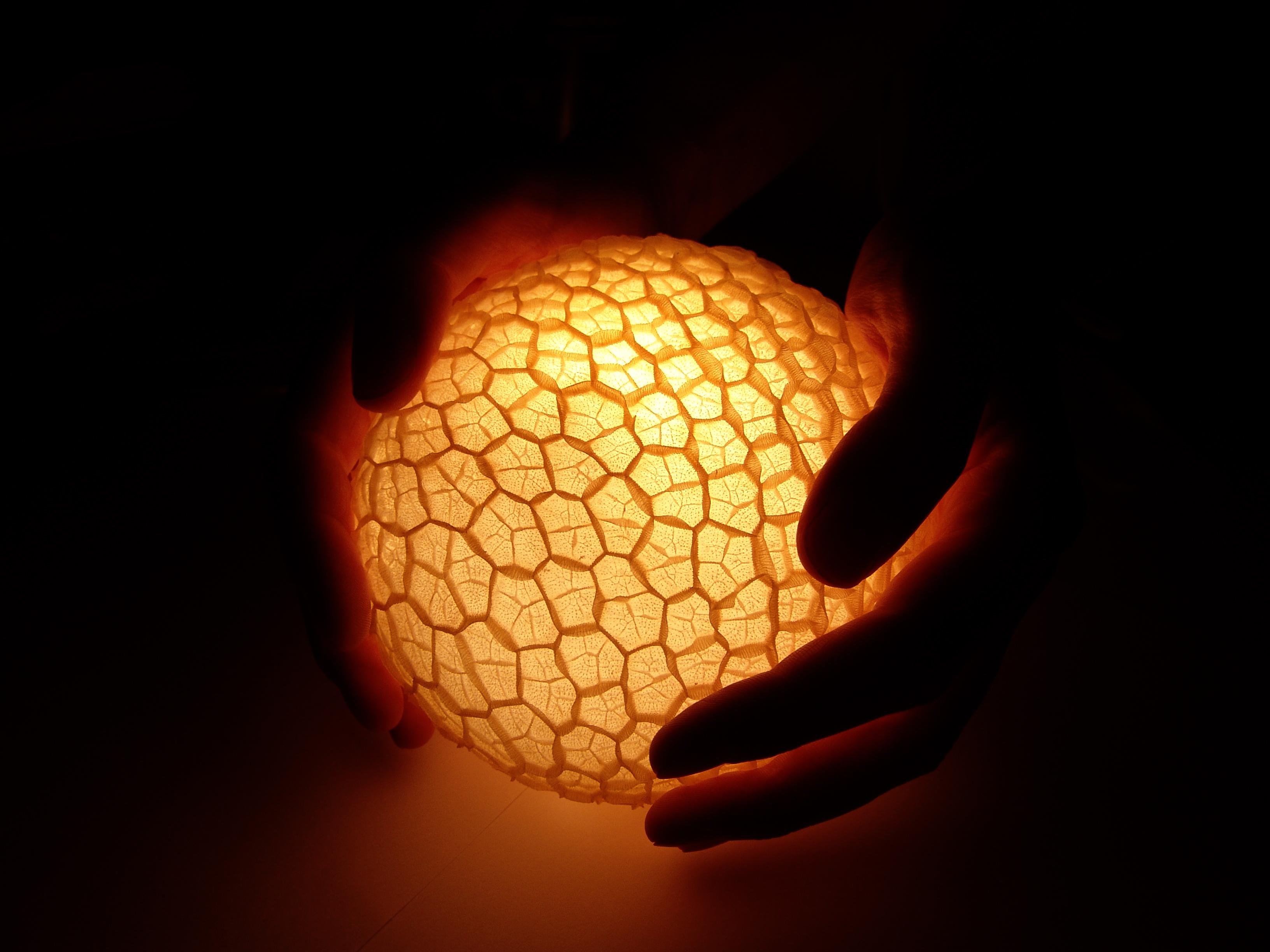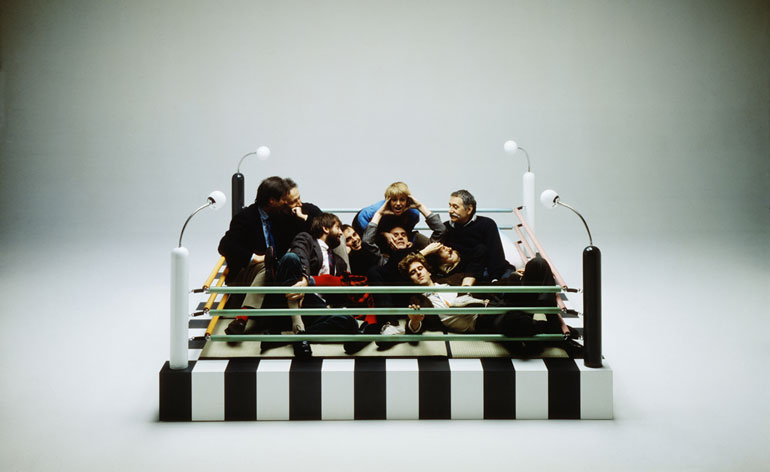Sea change: RDI Julia Lohmann on riding the wave of regenerative design
From lamps crafted from preserved sheep stomachs to towering sculptures made of seaweed, freshly appointed Royal Designer for Industry Julia Lohmann discusses her boundary-pushing work

Through her discipline-blurring practice, the German-born, Helsinki-based designer Julia Lohmann explores the intersection of ethics, sustainability, and our connection to the natural world. After graduating in Design Products from London’s Royal College of Art in 2004, her early work critically examined the use of animal materials, questioning how we transform animals into objects and the ethical implications of that process. Lohmann’s ongoing fascination with the alienation between humans and nature, and ways in which we can overcome it, has remained a central theme throughout her career.
A pivotal moment came during a visit to Japan, where Lohmann encountered seaweed and recognised its potential as a sustainable material—likening its versatility to leather but without the ethical complexities of animal death. Delving deeper, she discovered seaweed’s ecological benefits and in 2013 set up The Department of Seaweed, a platform for interdisciplinary research and experimentation with the material.

Installed at the Victoria and Albert Museum in 2013, the 'Oki Naganode' is a large-scale installation made of Japanese Naga seaweed, treated to remain flexible like a translucent leather and stretched over a modular framework made of cane and aluminium
Since moving to Helsinki in 2018 to join Aalto University, where she is associate professor of contemporary design, Lohmann has advanced her practice as a regenerative designer, fostering innovation and ecological responsibility in design. We caught up with Lohmann just days after she was named a Royal Designer for Industry by the Royal Society of Arts, to learn more about her journey, her groundbreaking work with seaweed, and her vision for a regenerative design future.

A portrait of Lohmann taken on a research trip to Iceland in 2023
Wallpaper*: What does becoming an Honorary Royal Designer for Industry mean to you?
Julia Lohmann: To become an RDI, you have to be nominated and the existing RDI fellows have to review your nomination, so I feel very thankful that I have been nominated. The ceremony was amazing — it was one of those moments when you can stop and reflect on all you have achieved. It really has some meaning to be selected from lots of other designers from the field.
What I find especially inspiring, is the fact that for me to receive the title shows how much broader the industry has become. So often there is a need to categorise the sort of work you do as a creative; people ask, ‘do you do design, or do you do art, or what do you do?’ I think given the challenges that lie ahead of us, we need to be thankful that our industry is now really diverse. With so many different skillsets, we have a better chance of finding more sustainable ways to exist.
For me, what is truly great is that the title ‘Royal Designer for Industry’ broadens the traditionally narrow definition of industrial design.
Receive our daily digest of inspiration, escapism and design stories from around the world direct to your inbox.
‘For me, what is truly great is that the title ‘Royal Designer for Industry’ broadens the traditionally narrow definition of industrial design.’
Julia Lohmann

Pictured here collecting kelp in Iceland, Lohmann is fascinated by seaweed's potential to replace harmful materials while also benefiting ecosystems
W*: In your view, has the design industry made meaningful progress in fostering inclusivity and embracing sustainable practices in recent years?
JL: I've noticed a shift towards more inclusive and regenerative design practices, with a recognition of the needs of all species, not just humans. With regenerative design now recognised as part of the broader design disciplines, we can more readily address pressing questions and engage in mainstream discussions about important topics.
In the field of design, you’re trying to push the limits of what's possible. You're always trying to stretch what you're understanding, or at least I do. I always ask, 'who is not included? Who are we not hearing? Who should be around the table, who should have a say around this topic?' That's the process that I'm going through when I design, and in a way, is one of the reasons I am a designer – because you can be challenging. You can critique a field that has such a significant impact on the world but is sometimes applied too unthinkingly.
I think it's really important that we as designers reflect on the changes that we are bringing to this world, because essentially, everything we design designs us back. We have to be very cautious, when trying to understand the potential implications our design decisions might have.
‘It's really important that we as designers reflect on the changes that we are bringing to this world, because essentially, everything we design designs us back.‘
Julia Lohmann

Produced in 2004, Lohmann's Ruminant Blooms lamps are made of preserved sheep and cow stomachs
W*: Can you tell us more about your work with seaweed and how it has evolved over time?
JL: Working with seaweed has shifted my understanding of how ecosystemic questions should drive the decision making in a design process. It offers the potential to replace harmful materials while also benefiting ecosystems. If we are now going out and saying, 'seaweed is the answer, let's just harvest more wild stock', then we are just doing it the wrong way – we're just increasing the problems for that habitat. I've been exploring the ethical considerations of seaweed, such as its ability to pull nutrients from the sea and create habitats for other species, and the importance of a sustainable, biocentric approach to seaweed farming.

Installed in Saaporo, Japan, in 2007, 'The Catch' is a wave-like sculpture made of more than 300 used and discarded fish-crates. It addresses issues of over-fishing and our unthinking consumption of marine life
One of the reasons I am a designer, is because you can be challenging. You can critique a field that has such a significant impact on the world
W*: What projects have you been working on lately that you are excited to see come to fruition in 2025
I'm exploring a diverse range of materials and approaches to address sustainability and our relationship with the natural world. Lately, I’ve been focused on building larger seaweed structures that serve as stages for discussions about how we relate to our water bodies. Seaweed is a recurring element in these projects — it’s wonderful because it brings the Ocean into the space in a multi-sensory way, enriching these conversations.
I’m also exploring new mediums, including a film project for MIT Museum called Mitomnia, which takes a philosophical look at the relationship between mitochondria and humans. Additionally, I collaborated with a colleague on a film capturing the experience of taking students snorkeling with a marine scientist to help them understand their role as designers.
Beyond the seaweed projects, I’ve been working with land-based organisms and conducting research into bio-colours and lighting design from a more-than-human-centric perspective. While the seaweed projects have received the most attention, my work spans diverse materials and approaches, all aimed at addressing sustainability and rethinking our connection with the natural world.

'We don’t want our food to remind us of the animal it is made of and, at the same time are able to create living materials through advances in bio-technology,' says Lohmann of her leather bench series. 'The ‘cow-bench’ explores the threshold between animal and material'
We need to rethink the models we’re using, particularly in terms of governance, to ensure we’re not limiting our potential to create sustainable solutions.
Julia Lohmann
W*: Reflecting on 2024, what are some of the challenges and opportunities you see in the design industry when it comes to sustainability and material innovation?
JL: The past few years have seen an exciting 'biological turn' in design, where working with living organisms opens up new ethical frameworks and material possibilities. There’s huge potential in bio-materials, and at my institution, we’re exploring this through collaborations between chemistry and design. But a challenge remains: it takes time and investment to bring these ideas to market. Often, companies expect immediate solutions, which can stifle progress.
The issue of intellectual property also concerns me – when companies patent biological processes, it can block innovation. We need to rethink the models we’re using, particularly in terms of governance, to ensure we’re not limiting our potential to create sustainable solutions. In the coming year, I’m excited to explore local seaweed cultures and enable other creatives to work with the Ocean through TIDAL arts, an EU-funded project with open calls for residencies and commissions.
Each year the RSA puts out an open call for RDI nominations. For updates on 2025 nominations, follow @therdifaculty on Instagram. The RSA also hosts a series of open Summer Sessions – intergenerational gatherings where RDIs, emerging designers, scientists and engineers. can share, inspire and challenge.
Ali Morris is a UK-based editor, writer and creative consultant specialising in design, interiors and architecture. In her 16 years as a design writer, Ali has travelled the world, crafting articles about creative projects, products, places and people for titles such as Dezeen, Wallpaper* and Kinfolk.
-
 The new Tudor Ranger watches master perfectly executed simplicity
The new Tudor Ranger watches master perfectly executed simplicityThe Tudor Ranger watches look back to the 1960s for a clean and legible design
-
 This late-night hangout brings back 1970s glam to LA’s Sunset Boulevard
This late-night hangout brings back 1970s glam to LA’s Sunset BoulevardGalerie On Sunset is primed for strong drinks, shared plates, live music, and long nights
-
 How Memphis developed from an informal gathering of restless creatives into one of design's most influential movements
How Memphis developed from an informal gathering of restless creatives into one of design's most influential movementsEverything you want to know about Memphis Design, from its history to its leading figures to the pieces to know (and buy)